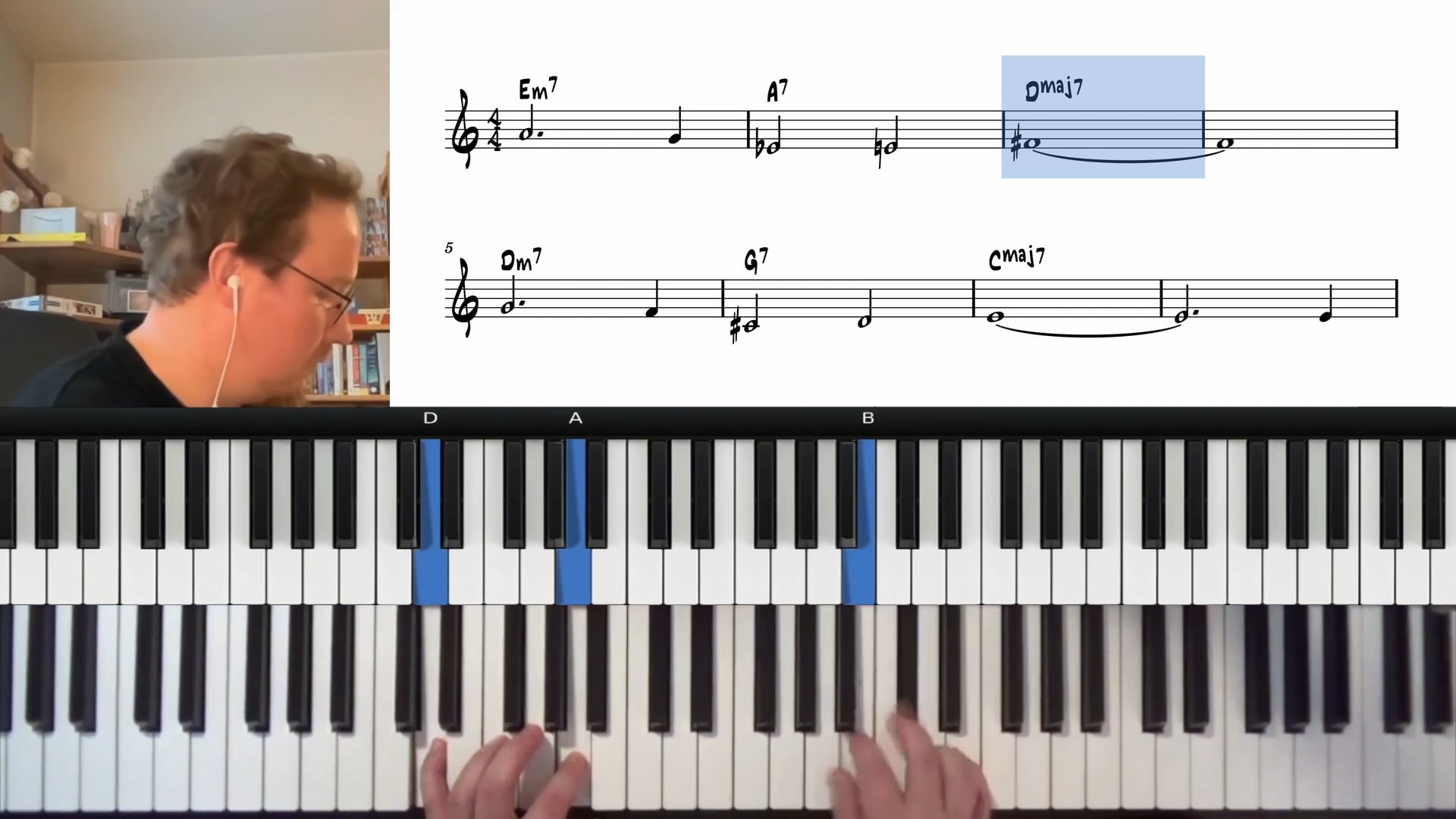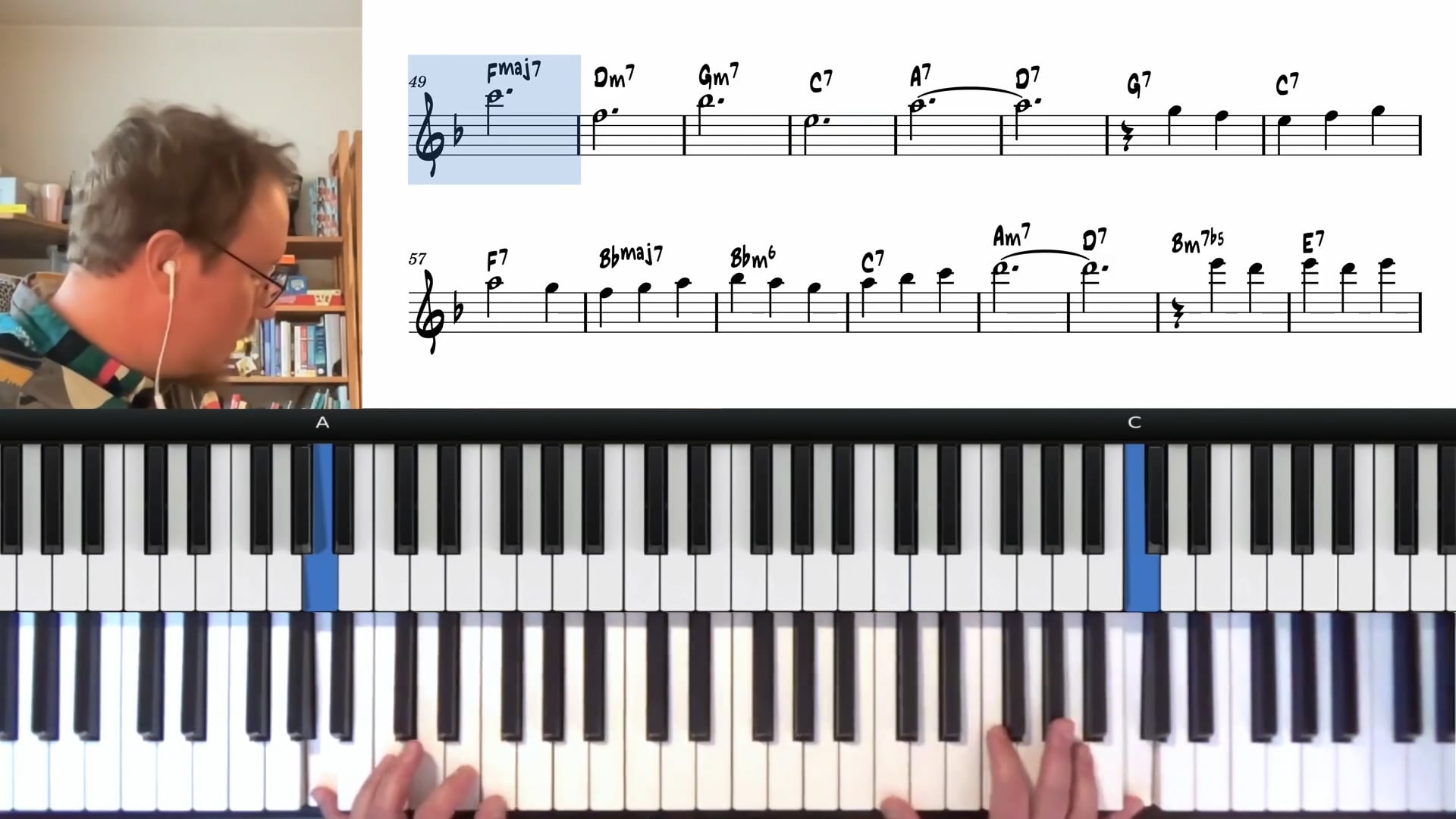
Tuomo Uusitalo
Tuomo is an award-winning pianist, composer, arranger and educator. Having released two albums as a leader, he has established himself in the New York jazz scene and continues touring internationally both as a leader as well as sideman.
Live Seminar Resources
Live Seminar Resources
PDF Downloads
- Emily - Chord Changes
Join PianoGroove Pro to access all downloads and learning resources.
Download theory supplements, midi files, chord changes and full note-for-note transcriptions of every lesson.
- Emily - Seminar Handouts
Join PianoGroove Pro to access all downloads and learning resources.
Download theory supplements, midi files, chord changes and full note-for-note transcriptions of every lesson.
Related Lessons
Seminar Description
Seminar Description
Exploring "Emily" – A Jazz Waltz Standard
Welcome to this jazz standard workshop, where we delve into the beautiful waltz ballad "Emily." This tune, composed by Johnny Mandel, has been performed by numerous vocalists and jazz musicians, with Bill Evans’ interpretations being some of the most well-known among pianists.
In this lesson, we will break down the harmonic structure of "Emily," identify key 2-5-1 progressions, explore reharmonization techniques, and analyze recordings by Frank Sinatra and Bill Evans. By the end of this session, you will have a deeper understanding of how to voice and interpret this jazz standard.
Understanding the Harmony of "Emily"
Identifying 2-5-1 Progressions
The harmony of "Emily" is rich with 2-5-1 movements, which provide smooth and logical harmonic motion. In the key of G major, we see an initial 1-6-2-5 progression:
Gmaj7 to E-7 to A-7 to D7,
which resolves back to Gmaj7 before leading into a secondary 2-5 to the IV chord:
A-7 to D7 to Cmaj7.
Tritone Substitutions and Modulations
One of the most intriguing harmonic elements in "Emily" is the modulation from G major to E major. This is achieved using a tritone substitution, where F7 serves as a substitute for the B7 that would normally lead to E major. This smooth chromatic movement enhances the harmonic color of the tune.
Duke Ellington was known for modulations in major and minor thirds, and we see this technique in "Emily," as it moves a minor third down from G major to E major.
Exploring Secondary Dominants
Another key concept in "Emily" is the use of secondary dominants, such as A7 functioning as the V7 of ii (5 of 2) in the key of G. This creates a temporary shift in harmonic focus, adding richness and movement to the progression.
Listening to Influential Recordings
Frank Sinatra’s Version
Listening to vocal versions of jazz standards is one of the best ways to internalize the melody and phrasing. Sinatra’s rendition of "Emily" highlights the lyrical flow and expressive nuances of the song, which can help pianists shape their phrasing and dynamics.
Bill Evans’ Interpretation
Bill Evans’ recordings of "Emily" are a masterclass in jazz piano voicings and harmonic sophistication. In his trio recording with Stan Getz, we hear a beautiful use of syncopation, modern three-four phrasing, and lush voicings that create a floating, ethereal feel.
Applying Bill Evans’ Voicings & Arranging Concepts
Three-Note Spread Voicings
Bill Evans often used three-note spread voicings, placing the root in the left hand while distributing guide tones (thirds and sevenths) between both hands. This technique creates an open, balanced sound, avoiding the density of traditional block chords.
Chromatic Voice Leading & Reharmonization
Throughout "Emily," Evans introduces chromatic inner voice movement and reharmonizations, such as altering the expected 3-6-2-5 turnaround by substituting a four minor (C-7 to F7) before resolving.
The Outro: Modulating to Eb Minor
One of the most stunning moments in Bill Evans’ interpretation is his outro, where he shifts unexpectedly from G major to Eb minor using a series of chromatic passing chords. This reharmonization technique is a great way to end a ballad with a sense of resolution and mystery.
Practice Tips for "Emily"
- Visualize the 2-5-1s – Identify key 2-5-1 progressions throughout the tune to understand harmonic motion.
- Experiment with Spread Voicings – Use Bill Evans’ three-note voicings to create a lush and open sound.
- Apply Tritone Substitutions – Try substituting dominant chords with their tritone equivalents to create new harmonic colors.
- Listen to Vocal Versions – Study Sinatra’s phrasing to shape your own melodic interpretation.
- Explore Chromatic Passing Chords – Add smooth voice-leading by incorporating half-step movements between chords.
By integrating these techniques into your practice, you’ll develop a deeper harmonic awareness and a more expressive approach to playing "Emily." Enjoy exploring this beautiful jazz waltz!






